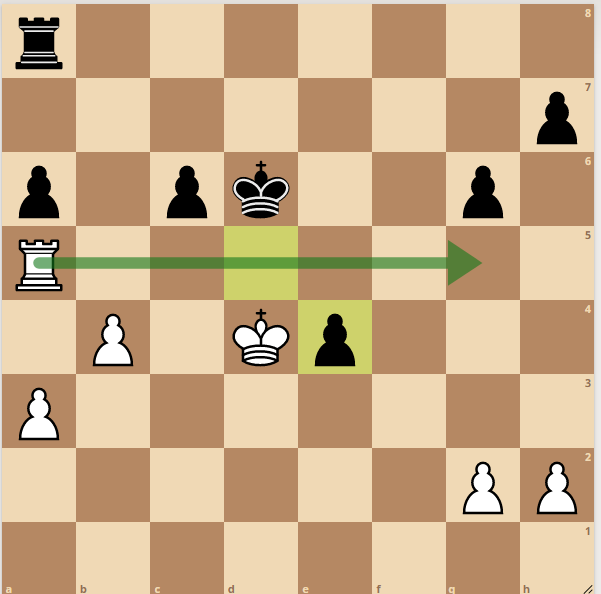
Mastering Positional Chess Openings: A Beginner's Guide To Improvement
Introduction to Positional Chess Openings
Chess, often hailed as the "Game of Kings," is a test of intellect and strategy. At the heart of chess strategy lies the intricate world of chess openings, setting the tone for the rest of the game. In this blog post, we will embark on a journey through the realm of positional chess openings, which are distinguished by their focus on building a solid, strategic foundation rather than immediate tactical complexities. In this guide, we will explore the essence of positional chess openings, provide notable examples, and delve into key ideas and sample lines.
Chapter 1: Opening Principles
In this chapter, we explore fundamental principles to guide your early moves, emphasizing central control, development, and king safety.
Control of the Center: The center of the board (d4, e4, d5, e5) is crucial. Opening with 1.e4 or 1.d4 is common.

Development: Develop knights and bishops before moving the same piece twice. Nf3, Nc3, Nf6, Nc6, Bc4, Bg4 are common moves.

King Safety: Castle to protect your king and connect the rooks.

Avoid Weaknesses: Avoid pawn weaknesses, such as isolated pawns and backward pawns.

Chapter 2: Open Game (1.e4)
Open games often arise after 1.e4 e5, and we delve into two key openings—the Ruy Lopez and the Italian Game.
Ruy Lopez (1.e4 e5 2.Nf3 Nc6 3.Bb5)
Italian Game (1.e4 e5 2.Nf3 Nc6 3.Bc4)
Chapter 3: Closed Game (1.d4)
Discover the strategic world of closed games, with a focus on the Queen's Gambit and the King's Indian Defense.
Queen's Gambit (1.d4 d5 2.c4)
King's Indian Defense (1.d4 Nf6 2.c4 g6)
Chapter 4: Semi-Open Games
Semi-open games lead to intriguing imbalances, and we look at both the Sicilian Defense and the French Defense.
Sicilian Defense (1.e4 c5)
French Defense (1.e4 e6)
Chapter 5: Hypermodern Openings
Explore hypermodern openings like the King's Indian Attack and the Nimzo-Indian Defense, which prioritize piece activity and flexibility.
King's Indian Attack (1.Nf3 d5 2.g3)
Nimzo-Indian Defense (1.d4 Nf6 2.c4 e6 3.Nc3 Bb4)
Chapter 6: Common Pawn Structures
Pawn structures define the nature of your game, and we discuss isolated queen's pawns, pawn chains, and closed centers.
Isolated Queen's Pawn (IQP): Arises from d4 openings like the Queen's Gambit. Focus on piece activity and dynamic play.

Pawn Chains: Positions like the French Defense create pawn chains. The d4 pawn is the base of the chain, and white tries to exploit it.

Closed Centers: In many 1.e4 e5 openings, the center remains closed. Maneuvering and central control are critical.

Chapter 7: The Middlegame Transition
The middlegame transition is where games are often decided; here, we delve into pawn breaks, piece exchanges, and king safety.
Pawn Breaks: Plan pawn breaks to open lines or create weaknesses. Common in closed positions.

Piece Exchanges: Consider whether to trade pieces or maintain them for a king-side attack or central control.

King Safety: Ensure your king is safe, either through castling or keeping the center closed.
Chapter 8: Key Endgames
Learn essential endgames such as rook endgames, minor piece endgames, and the importance of passed pawns in securing victory.
Rook Endgames: Learn rook and pawn endgames, often arising from open positions.

Minor Piece Endgames: Understand bishop vs. knight endgames and how to convert them.

Passed Pawns: Recognize the power of passed pawns and their importance in endgames.
Positional chess openings lay the groundwork for strategic mastery in the world of chess. By prioritizing pawn structure, center control, piece development, and long-term planning, players can create positions that offer opportunities for accumulating advantages. Whether you're a novice or a seasoned player, mastering these ideas and sample lines will enhance your understanding of chess strategy. Study master games, practice, and adapt your opening repertoire to your style of play. With a solid foundation in positional openings, you'll be better equipped to navigate the complexities of the middlegame and endgame, ultimately making you a more formidable and well-rounded chess player. So, set up the board, refine your positional play, and embark on a journey of chess excellence. Happy chess playing! ![]()
